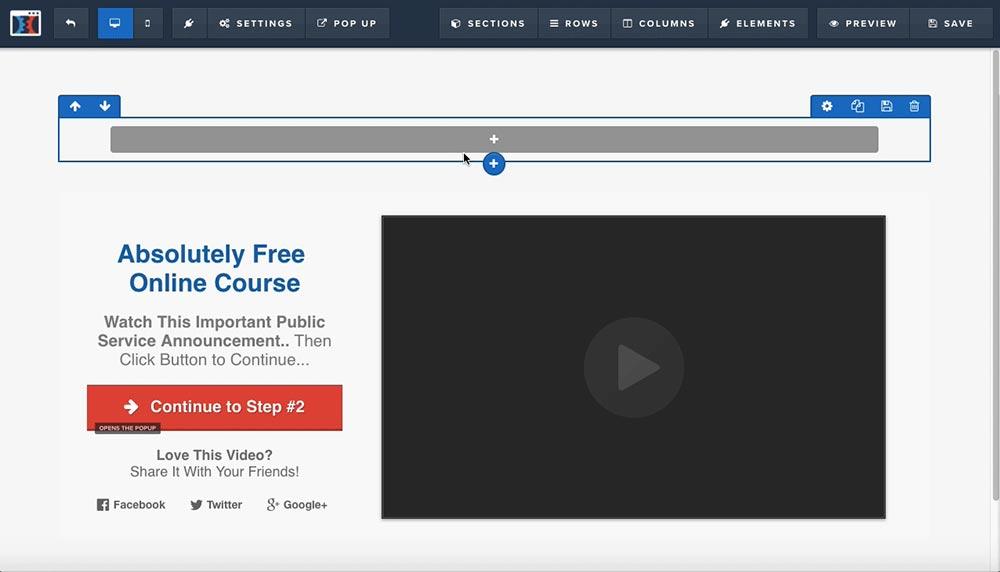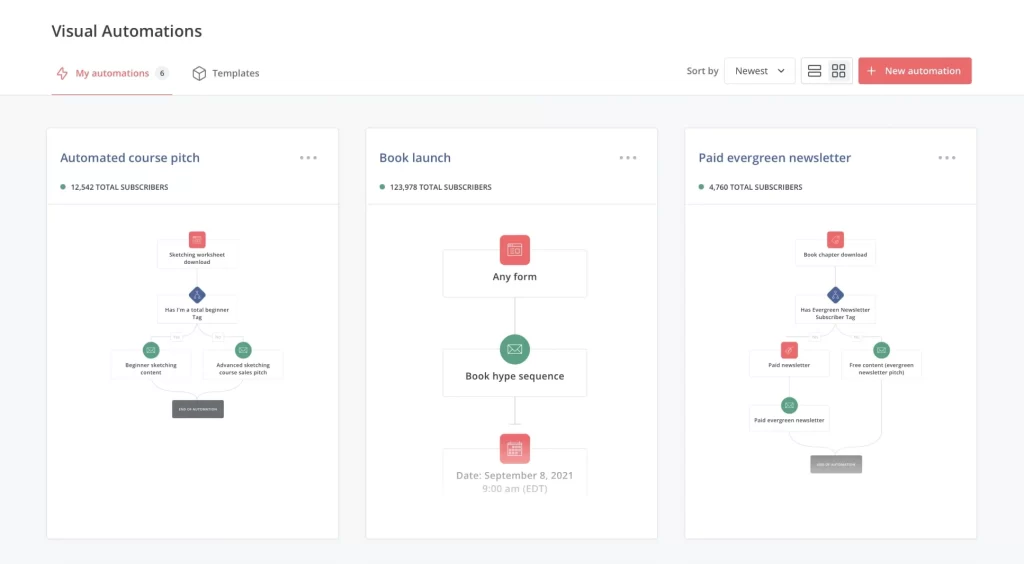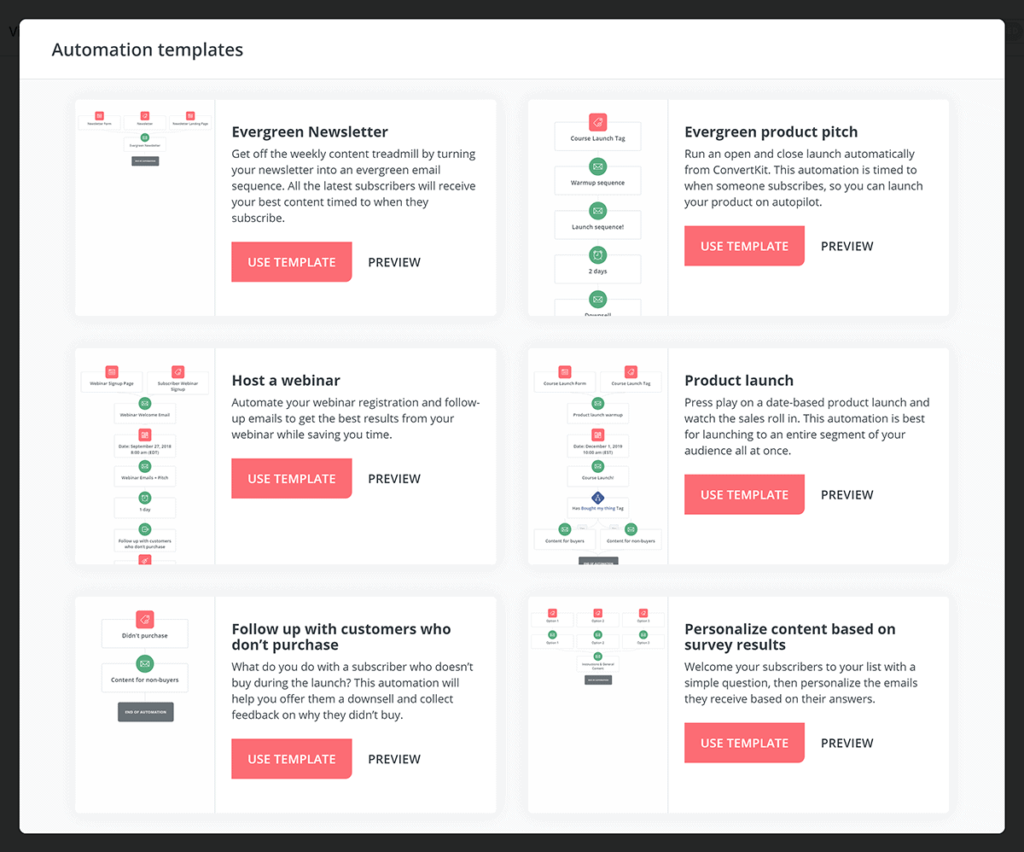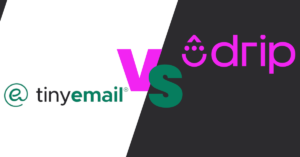Feeling lost in the labyrinth of online marketing tools? Struggling to choose between ClickFunnels vs ConvertKit for building your audience and boosting conversions? You’re not alone! Both platforms offer enticing features and promises, but deciphering which one aligns perfectly with your needs and budget can feel like cracking a cryptic code.
Fear not, digital adventurers! This blog post is your decoder ring, unraveling the mysteries of ClickFunnels vs ConvertKit, head-to-head, in a comprehensive comparison for 2024. We’ll dive deep into their core functionalities, pricing structures, strengths, and weaknesses, leaving you empowered to make the confident choice that fuels your online success.
Table of Contents
Core Functionality: ClickFunnels vs ConvertKit – Understanding Their Tools
Choosing the right platform to manage your audience and grow your business can be daunting, especially when faced with popular options like ClickFunnels vs ConvertKit. To make an informed decision, let’s dive into the core functionalities of each platform and see which one aligns best with your needs.
ClickFunnels: Building Conversion Pipelines
Think of ClickFunnels as a digital architect, specializing in constructing high-converting sales funnels. This means guiding your audience through a series of pages designed to capture leads, nurture them, and ultimately convert them into paying customers. ClickFunnels comes packed with features like:
- Drag-and-drop landing page builder: Create visually appealing landing pages to capture leads and introduce your offers.
- Pre-designed funnel templates: Save time and get started quickly with ready-made funnels for various goals, like webinars, product launches, or lead magnets.
- Built-in CRM: Manage your leads and customers, track interactions, and personalize your marketing efforts.
- Webinar hosting: Engage your audience in real-time and convert attendees into customers directly.
- Membership site hosting: Deliver exclusive content, courses, or communities to paying members.
ConvertKit: Mastering the Art of Email Marketing
While ClickFunnels focuses on the “big picture” of sales funnels, ConvertKit champions the power of email marketing, offering the tools to cultivate deep connections with your audience. Think of it as your email whisperer, empowering you to:
- Create visually stunning email sequences: Design engaging and personalized email campaigns to nurture leads, deliver content, and promote your products.
- Automate email workflows: Set up automated email series triggered by subscriber actions, like landing on a specific page or making a purchase.
- Segment your audience: Divide your subscribers into groups based on their interests and behavior for targeted communication.
- Build custom forms and popups: Capture leads and grow your email list with strategically placed forms and popups on your website or landing pages.
- Powerful analytics: Track email opens, clicks, unsubscribes, and other metrics to measure your campaign performance and optimize your efforts.
Where the Lines Blur
While both platforms have distinct strengths, there’s some overlap, too. Both offer landing page creation and basic integrations with payment gateways and email providers. However, their core functionalities cater to different needs:
- ClickFunnels excels at crafting sales funnels and converting leads into customers. It’s ideal for businesses already with established audiences or ready to invest in building complex funnels.
- ConvertKit shines in nurturing relationships and building dedicated followings through email marketing. It’s perfect for solopreneurs, creators, and anyone prioritizing email engagement and audience growth.
Pricing and Value: Deciphering the ClickFunnels vs ConvertKit Equation
When it comes to choosing between ClickFunnels vs ConvertKit, price point can be a significant factor. But beyond the simple dollar figure, it’s crucial to understand the “value” each platform offers and how it aligns with your budget and needs.
ClickFunnels: A Premium Toolbox with a Premium Price Tag
ClickFunnels doesn’t shy away from its premium positioning. Their plans start at $97 per month for the basic “ClickFunnels Backpack” and escalate to $297 per month for the top-tier “ClickFunnels Platinum.” For this price, you get access to a full arsenal of sales funnel building tools, including:
- Unlimited funnels and pages
- A suite of pre-designed funnel templates
- Built-in CRM and membership site hosting
- Advanced features like webinar hosting and priority support
However, it’s worth noting that ClickFunnels’ pricing structure can be a hurdle for solopreneurs and small businesses starting out. The lack of a free plan or an affordable entry point might feel exclusionary for those hesitant to make a significant investment upfront.

ConvertKit: A Freelander with Unexpected Power
ConvertKit takes a different approach, offering a free plan for those with up to 1,000 subscribers. This generous option includes features like unlimited landing pages and forms, basic email automation, and subscriber segmentation. For those needing more, paid plans start at $29 per month and scale with subscriber count, offering advanced automation, premium support, and additional integrations.
This tiered pricing allows ConvertKit to cater to a wider range of users, from hobbyist bloggers to established creators building large audiences. The free plan makes it an attractive entry point for beginners, while the affordable paid tiers offer an excellent value proposition for those focused on email marketing and audience engagement.

Finding Your Value Sweet Spot
So, who wins the “value” battle? It depends on your needs and budget.
- ClickFunnels shines for businesses requiring comprehensive sales funnel functionality and advanced features. If you’re ready to invest and prioritize conversions, its price tag might be justified.
- ConvertKit excels for email-centric audiences and budget-conscious creators. Their free plan and affordable paid tiers offer excellent value for those focused on building relationships and engagement through email marketing.
Ease of Use and Learning Curve: Conquering ClickFunnels vs ConvertKit
Choosing the right platform for your online ventures shouldn’t involve a steep learning curve or technical headaches. So, when it comes to ClickFunnels vs ConvertKit, which one offers a smoother ride for beginners and seasoned users alike?
ClickFunnels: Visual Drag-and-Drop, but Beware the Depth
ClickFunnels boasts a drag-and-drop interface designed to be user-friendly. With pre-built templates and visual cues, creating simple landing pages and funnels feels pretty intuitive. However, venturing beyond the basics can turn tricky. Advanced settings, intricate funnel logic, and integrations require a deeper understanding of the platform and its functionalities.
Think of ClickFunnels as a powerful car with a sleek dashboard but a potentially overwhelming manual. While navigating the basics is straightforward, mastering all the controls and customizations takes time and dedication.

ConvertKit: Simplicity Reigns Supreme
ConvertKit champions minimalist design and user-friendliness. Its interface is clean, uncluttered, and organized, making it easy to navigate even for first-time email marketing explorers. Creating email sequences, setting up automations, and managing your audience feels effortless thanks to intuitive menus and helpful guides.
Imagine ConvertKit as a comfortable bicycle – easy to hop on and pedal, even for those wobbly on two wheels. While it may not offer the high-octane thrills of a complex engine, it gets you where you need to go with less sweat and fewer spills.
Finding Your Comfort Zone
So, who wins the “ease of use” crown? It depends on your tech tolerance and comfort level:
- ClickFunnels is ideal for those comfortable with a learning curve and willing to invest time in mastering its powerful features. If you’re building intricate sales funnels and require advanced customization, ClickFunnels can be a rewarding (albeit challenging) companion.
- ConvertKit shines for users who prioritize simplicity and intuitiveness. It’s perfect for beginners, solopreneurs, and anyone who wants to focus on email marketing without getting bogged down in technical complexities.
Features and Automation: Unleashing the Powerhouse Within ClickFunnels vs ConvertKit
When it comes to taking your online business to the next level, both ClickFunnels vsConvertKit offer impressive feature sets and automation capabilities. But understanding their nuanced strengths can help you choose the platform that best amplifies your efforts.
ClickFunnels: A Symphony of Sales-Focused Features
ClickFunnels goes beyond basic landing pages and delves into the intricate world of conversion-optimized sales funnels. Its feature arsenal includes:
- Pre-designed funnel templates: Jumpstart your journey with ready-made funnels for webinars, product launches, lead magnets, and more.
- Advanced split testing: A/B test different elements of your funnels to identify what resonates best with your audience and optimize for increased conversions.
- Order bump and downsell features: Upsell additional products at checkout or offer alternative options for those hesitant to commit, maximizing your revenue potential.
- Built-in membership site: Deliver exclusive content, courses, or communities to paying members directly within your ClickFunnels ecosystem.

Automation on Steroids: ClickFunnels takes automation to the next level with advanced workflows. Trigger email sequences based on specific user actions, segment your audience for targeted messaging, and even automate follow-up calls or SMS for maximum engagement.
ConvertKit: The Email Automation Maestro
While ClickFunnels focuses on the bigger funnel picture, ConvertKit excels in the art of nurturing and engaging your audience through email automation. Its key features include:
- Visual automation builder: Drag-and-drop sequences make setting up automated email campaigns intuitive and visually appealing.
- Powerful segmentation: Divide your audience based on interests, behavior, or any other data point to deliver personalized email experiences.
- Advanced tagging and triggers: Assign tags based on user actions and use them to trigger specific email sequences, ensuring your messaging is highly relevant to each subscriber.
- Dynamic content and conditional logic: Personalize your emails with dynamic content based on individual subscriber data, making them feel like a one-on-one conversation.

The Automation Equation: ConvertKit’s automation revolves around email engagement, helping you build deep relationships with your audience. You can automate welcome sequences, nurture leads, trigger abandoned cart emails, and more.
Choosing Your Powerhouse:
So, who wins the “features and automation” battle? It’s a draw, but with different strengths:
- ClickFunnels excels at building and automating complex sales funnels, ideal for businesses focused on conversions and scaling revenue.
- ConvertKit shines in email automation and audience engagement, perfect for creators, solopreneurs, and anyone prioritizing fostering strong connections with their subscribers.
Strengths and Weaknesses: Unveiling the Trade-Offs in ClickFunnels vs ConvertKit
Choosing between ClickFunnels vs ConvertKit isn’t about crowning a champion – it’s about understanding the unique strengths and weaknesses of each platform and finding the perfect fit for your needs. Here’s a closer look at the trade-offs you might encounter:
ClickFunnels:
Strengths:
- Sales Funnel Powerhouse: ClickFunnels reigns supreme in crafting high-converting sales funnels, with pre-built templates, order bump features, and advanced automation to optimize every step of the customer journey.
- Built-in Ecosystem: From landing pages and membership sites to webinars and CRM, ClickFunnels offers a comprehensive suite of tools within a single platform, streamlining your workflow and reducing reliance on external integrations.
- Scalability for Growth: As your business expands, ClickFunnels scales with you, accommodating complex funnels and large audiences with robust features and reliable infrastructure.

Weaknesses:
- Steep Learning Curve: Mastering ClickFunnels’ advanced features and intricate functionalities can be daunting for beginners, requiring dedication and potentially external resources.
- Email Marketing Limitations: While not its core focus, ClickFunnels’ email marketing capabilities are less robust compared to dedicated platforms like ConvertKit, lacking advanced segmentation and personalization options.
- Price Barrier: ClickFunnels’ premium pricing structure might be prohibitive for solopreneurs or small businesses starting out, making it a significant investment upfront.
ConvertKit:
Strengths:
- Email Marketing Maestro: ConvertKit shines in email automation and audience engagement, offering visual workflows, powerful segmentation, and dynamic content personalization for highly targeted and effective email campaigns.
- User-Friendly Interface: ConvertKit’s clean and intuitive interface makes it easy for beginners to navigate and manage their email list, contacts, and automation sequences.
- Affordable and Scalable: With a free plan for smaller audiences and tiered pricing that scales with your subscriber count, ConvertKit offers an accessible entry point and adapts to your growth seamlessly.

Weaknesses:
- Limited Sales Funnel Functionality: While ConvertKit allows for basic landing page creation and lead capture, it lacks the comprehensive sales funnel building and conversion optimization features offered by ClickFunnels.
- Fewer Built-in Features: Unlike ClickFunnels’ all-in-one ecosystem, ConvertKit requires integrations with external tools for functionalities like membership sites, webinars, or CRM, adding complexity to your workflow.
- May Not Scale for Complex Needs: As your business grows and requires intricate sales funnels or advanced automation, ConvertKit’s capabilities might become limiting, necessitating a platform upgrade.
Finding Your Sweet Spot:
The best platform for you depends on your priorities and resources:
- Choose ClickFunnels if: You’re laser-focused on building high-converting sales funnels, prioritize an all-in-one ecosystem, and have the budget and willingness to invest in learning its advanced features.
- Choose ConvertKit if: Email marketing and audience engagement are your core objectives, you value user-friendliness and affordability, and your current needs don’t necessitate complex sales funnels or extensive built-in features.
Finding Your Perfect Match: Ideal User Profiles for ClickFunnels vs ConvertKit
Choosing between ClickFunnels vs ConvertKit isn’t just about features or functionalities – it’s about finding the platform that aligns perfectly with your goals and workflow. To make this decision easier, let’s explore the ideal user profiles for each platform:
ClickFunnels Champions:
- Sales-Focused Businesses: If your primary objective is driving conversions and maximizing revenue through high-converting sales funnels, ClickFunnels is your champion. Think e-commerce stores, product launches, lead generation agencies, and any business with a complex sales process.
- Funnel-Obsessed Entrepreneurs: For entrepreneurs who thrive on building intricate funnels, testing different elements, and optimizing every step of the customer journey, ClickFunnels’ advanced functionalities and robust automation are a dream come true.
- Marketing Agencies and Consultants: Agencies and consultants managing multiple client funnels can leverage ClickFunnels’ scalability, built-in CRM, and team collaboration features to streamline their workflow and manage client projects efficiently.

ConvertKit Crusaders:
- Solopreneurs and Creators: Building a loyal audience and nurturing relationships through engaging email sequences is ConvertKit’s forte. It’s ideal for bloggers, podcasters, coaches, consultants, and solopreneurs who prioritize email marketing as their primary communication channel.
- Content Marketing Masters: If your content game is strong and you want to convert readers into subscribers and customers through personalized email nurturing, ConvertKit’s automation capabilities, segmentation options, and dynamic content features can be incredibly powerful tools.
- Budget-Conscious Entrepreneurs: Starting out or bootstrapping your business? ConvertKit’s free plan and affordable pricing structure make it an accessible platform for those who are value-driven and prioritize email marketing without the hefty price tag.
Beyond the Labels:
Remember, these are just ideal user profiles. Don’t be afraid to explore beyond the labels and choose the platform that resonates best with your individual needs and preferences. Here are some additional factors to consider:
- Technical Comfort Level: ClickFunnels has a steeper learning curve, while ConvertKit is more user-friendly. Choose the platform that matches your tech savviness.
- Integrations: Consider the external tools you rely on and ensure your chosen platform integrates seamlessly with them.
- Growth Potential: Think about your future needs. If you anticipate significant growth, choose a platform that scales with your audience and business.
The Verdict: ClickFunnels vs ConvertKit – It’s All About You
Choosing between ClickFunnels vs ConvertKit might have felt like navigating a high-stakes game show finale, but hey, you made it! By delving into the core functionalities, pricing structures, strengths, and weaknesses of each platform, you’re now equipped to make an informed decision that empowers your online ventures.
The truth is, there’s no universal “winner” in this battle – it’s all about finding the perfect fit for your goals, resources, and workflow.
- If you’re a sales funnel maestro in the making, ClickFunnels awaits with its powerful tools and robust automation. Buckle up for a learning curve, but be prepared to orchestrate conversions like a digital conductor.
- If your heart beats for email marketing and audience engagement, ConvertKit is your soul mate. Dive into personalized sequences, targeted segmentation, and dynamic content, crafting relationships that convert with every click.
Remember, your choice extends beyond features and functionalities. It’s about choosing a platform that ignites your passion, complements your skillset, and fuels your journey towards online success.
So, go forth, test drive, experiment, and most importantly, have fun! This is your digital playground, and the right platform will help you build something truly remarkable.
Bonus Tip: Whether you choose ClickFunnels or ConvertKit, remember that a platform is just a tool. Your dedication, creativity, and passion are the real keys to unlocking your online potential. So, keep learning, keep growing, and keep pushing the boundaries – the digital world awaits your brilliance!




